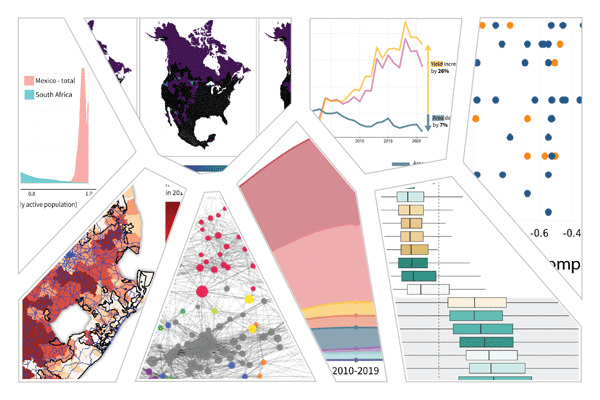The Growth Lab works to push the frontier of economic growth and development policy research, and our multi-disciplinary team extended our pioneering research agenda to five continents in 2023. Our researchers engaged the world in leveraging decarbonization as a pathway for growth, identifying the barriers to migration and mobility of skills, examining inequality in cities and the effects of remoteness on growth, and understanding the role of innovation in economic complexity. It’s our mission to collaborate with policymakers and share our insights with the world through teaching, publications, and open-access digital tools. In this spirit, here are some visual insights from our research in 2023.
Building roads to include remote areas in South Africa

A lack of road connectivity in South Africa reduces the comparative advantages of its rural former homelands, which are home to a large share of the population. This map highlights roads over population density in quintiles: highest in red, lowest in white. The absence of paved roads not only adds hours to production and travel times but also dramatically increases damage to sensitive products and disruptions in supply chains. In the context of South Africa’s duality between competitive commercial agriculture in some parts of the country and unproductive smallholder agriculture in others, the disadvantage of road connectivity has large implications.
Racial dynamics in American industries

The Growth Lab is conducting research on racial inclusion within U.S. cities, focusing on industry and occupation levels. The study examines the representation of Black workers in various industries compared to their labor force proportion. The accompanying chart shows the most disproportionately represented industries for Black workers, where construction is notably underrepresented nationally despite its size. The research suggests educational attainment, such as having a bachelor’s degree, may account for some disparities, as indicated by the chart’s color coding. Ongoing work will further analyze racial and gender aspects to inform policies for equitable economic growth in cities.





